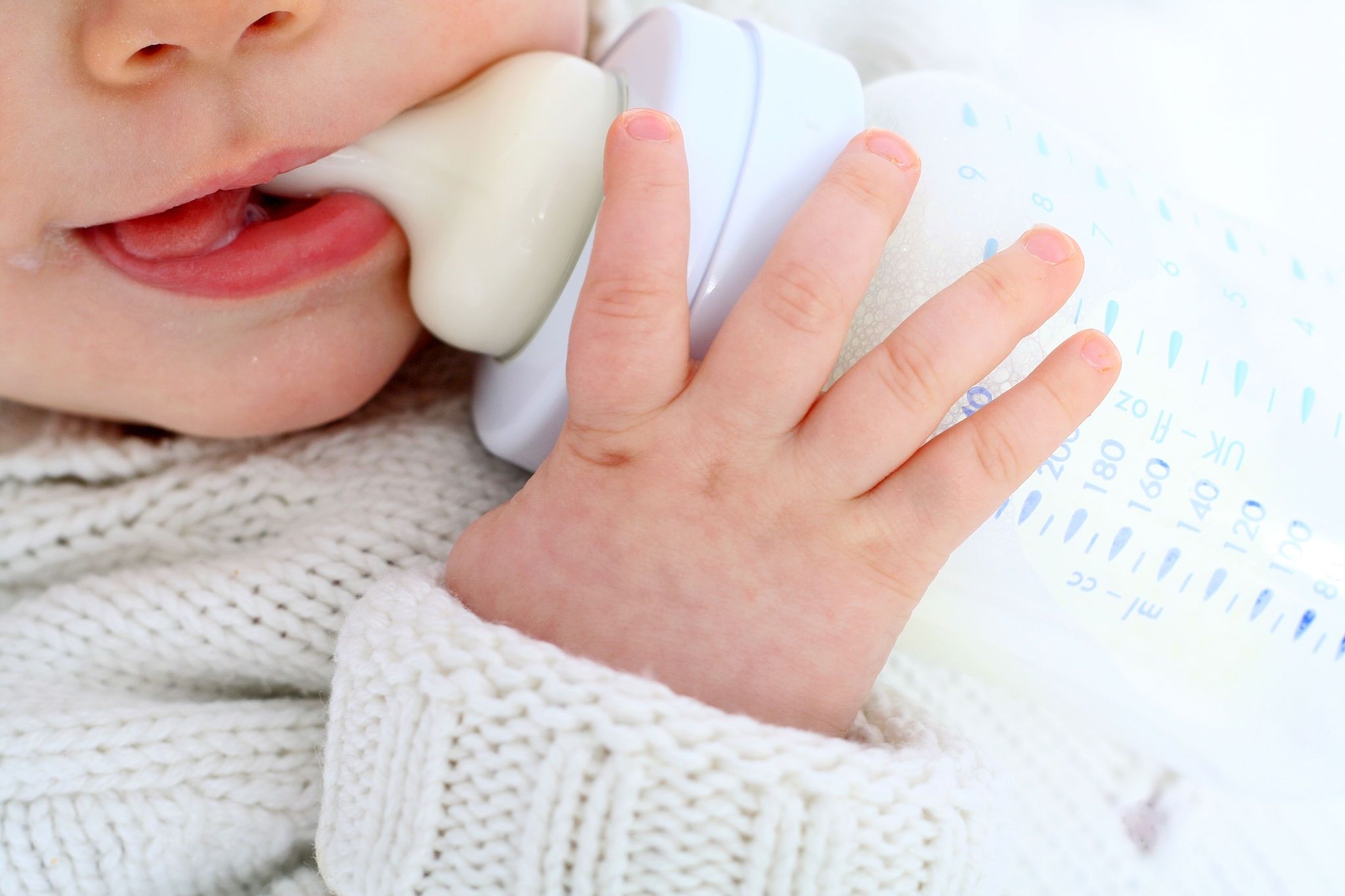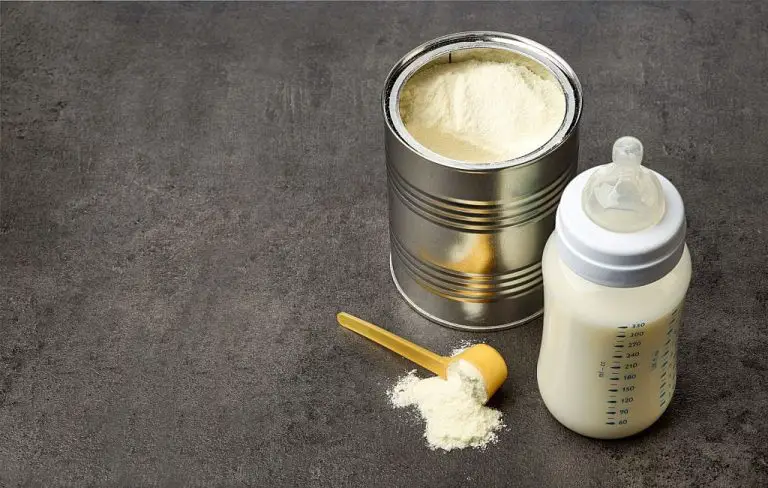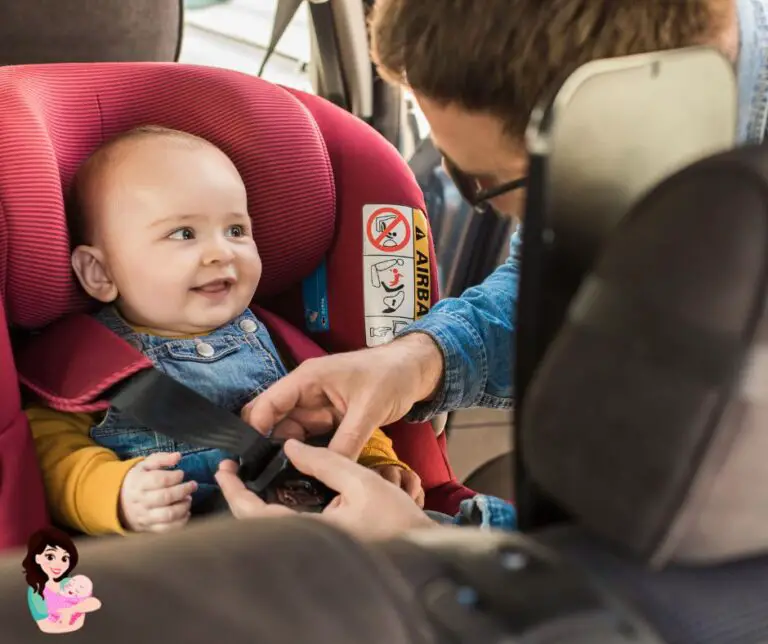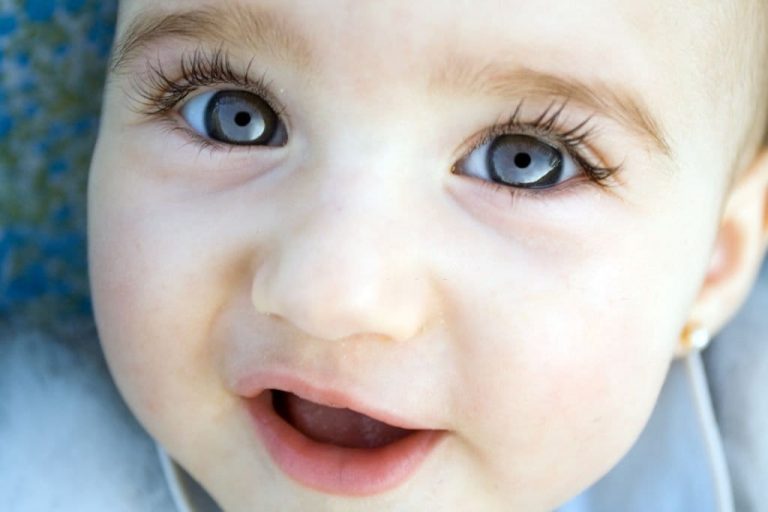
When you’re preparing to have a baby – and I’ve noticed this is particularly the case for first-time moms – there are many things you need to think about – diapers, strollers, car seats, and of course, bottles. Even if you plan on breastfeeding your baby, you’re still going to need bottles at some point. The issue isn’t whether you’ll need them – they are one of the essential parts of raising a baby; the real question is – how many baby bottles do I need?
I was asking myself the same thing when I was carrying my son Leo. There was a lot of asking around and researching until I figured it out – and today I’m sharing my findings with you.
Things To Consider Before Deciding On A Number Of Baby Bottles
To make the best decision regarding the adequate number of baby bottles you should buy, you should consider several things, one of them being the fact that infants go through certain stages during the first year of their life. Throughout these stages, your little one’s appetite will change drastically, so you need to have bottles that can keep up with them. Another thing you should have in mind is that some babies get colic; there are bottles made especially for this, which I strongly recommend buying just in case you ever need them.
First Year Of Baby’s Life In Stages
The first year of your baby’s life will amaze you not just regarding their growth, but their growing appetite, too.
- The Colostrum Phase: First Three Days – This period is called the colostrum phase; since baby’s stomach is tiny at this point, they’ll eat more often, but will consume small amounts.
- The Adjustment Phase: Up to Six Weeks – After day three and up to six weeks, your body will establish milk production; there’s no need to worry your baby isn’t getting enough.
- Introducing the Bottle: Six Weeks to Three Months – If you’re exclusively breastfeeding, the 6-week mark would be a perfect time to introduce the bottle. Also, your baby’s stomach has grown enough to hold larger quantities of milk, so the number of feedings will go down.
- Hungrier than Usual: Four to Six Months – This is a stage when your baby will go through growth spurts, which will probably make them hungrier than usual; while still maintaining a feeding schedule, you can try feeding on demand, too.
- Getting Ready for Finger Foods: Seven to Nine Months – After the 6-month milestone, your baby will probably start to eat some pureed or mashed solid foods, and once they’re eight months old, you could introduce “finger foods.” At this point, milk will still be an important part of your child’s nutrition.
- A Table for Three: Ten to Twelve Months – As your baby comes closer to their first birthday, you can now start to include them in family meals entirely; you no longer have to prepare two separate lunches – as long as nothing’s too spicy, your baby can eat it, too.
Feeding Calculator: How Much Milk Or Formula Does My Baby Need
Use the table to get a clearer picture on how often you should feed your baby and how much they’ll eat on a daily basis, whether you’re breastfeeding or formula feeding. Keep in mind these are only estimates; the definite number of feedings will depend solely on your child’s needs.
The size of the bottle and nipple flow will change as your baby goes through developmental stages. Start with smaller (4-ounce) bottles and slow-flow nipples, and move on to 9-ounce bottles and medium and fast-flow nipples as your child grows and starts consuming more milk per feeding.
Good to Know: If your baby was born prematurely, you should start counting the baby’s age from the due date, not the actual date of birth; in the time before the expected date of birth, your child is simply considered a newborn.
Note:
- During the first year of baby’s life, solid food should only be treated as an addition to breastfeeding or formula – it shouldn’t replace a feeding session.
- The table I provided doesn’t take into account the fact that babies older than six months have solid food included in their diet. There’s no need to worry if your baby consumes a bit less milk than the table suggests they should since they started eating solids – this is completely normal, your child is just slowly progressing onto a more „grown-up“ diet. As long as the difference in milk consumption is replaced by a healthy snack, everything’s fine.
- For example, an average 8-month old baby should consume up to 30 ounces of milk spread out to five feedings throughout the day. With solid foods included, it’s normal for that number to drop by 5-10 ounces as long as the baby eats the same amount of veggies or fruit as a snack instead. So, if your child is consuming 5 ounces of solid food a day, don’t worry if they consume up to 5 ounces of milk less than the table suggests they should.
Is Your Baby Colicky?
We all know babies cry a lot – newborns spend up to two hours a day crying. So, how do you know if your child’s tears are a result of colic? Here are some symptoms:
- Crying for no apparent reason
- You can’t seem to soothe them
- Crying starts at the same time every day or in the evening
- A bloated tummy
- Crying for three or more hours every day for at least three weeks (more than three days a week)
There are specialized bottles and nipples for situations like this, usually called anti-colic bottles; if you think your infant is suffering from colic, take them to a pediatrician to be sure and consider buying bottles made especially for colicky babies.
How Many Bottles Do Breastfed Babies Need?
Even if you’ve decided to breastfeed your baby exclusively, there are going to be situations when that simply isn’t an option. Think ahead and prepare for such occasions; you’re going to need a few bottles (ideally ones that are compatible with the breast pump you’re using).
The number of bottles you’ll need to have prepared depends on how long you’ll be gone and the size of the bottle and nipple-flow will be determined by your child’s age.
Stay-At-Home Moms
Once the baby is born, the first few days postpartum will be chaotic feeding-wise. During the first three days (the colostrum phase) your little one will consume small amounts of “practice milk,” but don’t worry, it will be enough for them at that point. Have several bottles for newborns (consider the 2-ounce ones) with a preemie or slow-flow nipple prepared in case your milk comes in later than expected.
If you’re planning a date with your partner or a dinner with friends you won’t be gone for more than a couple of hours, so you probably won’t need to prepare more than two bottles. Just to be safe, you can add another bottle, but your baby definitely won’t need more than three.
Even though your baby is primarily breastfed, you should start introducing the bottle early on. Give your infant at least four to six weeks to get used to breastfeeding and then offer the bottle. That way your baby will learn that bottle is okay too, and you’ll be able to take a night off and relax while someone else (dad or some other family member) feeds the baby.
Working Moms
If you know when exactly you’re going back to work, start introducing the bottle at least two or three weeks before that; give you and your baby enough time to adjust to this new way of feeding.
Since you’ll be gone for more than a few hours, probably an entire workday, you need to plan everything out before you leave for work. When you’re leaving your child with a babysitter or in a daycare, you need to prepare for the entire time your baby will be in someone else’s care. That means enough bottles, so they don’t have to reuse them throughout the day.
I guess you already know how many times in average you feed your baby, so use that as a guide or consult the table I provided (but keep in mind those are average values and might vary from child to child).
Good to Know: It’s not unusual for breastfed babies to eat less when mom’s not around – this is called reverse cycling.
How Many Bottles Do Formula-Fed Babies Need
If your child is formula-fed from birth, there are several things to take into consideration when you’re deciding on how many bottles to buy. Think about how often you plan on cleaning the bottles, are you going to prepare formula in advance or before every feeding, are you going to leave your child in daycare, and most importantly, how many times a day does your baby feed.
You need to consider the stages of your baby’s development – you’ll need different bottle sizes and nipple flows:
- For infants younger than six months, I recommend 4 or 9-ounce bottles and slow-flow nipples.
- For babies older than six months, buy 9-ounce bottles and medium to fast-flow nipples.
- Once your child is older than nine months, you can consider buying Y-cut nipples.
Also, don’t go and buy half a dozen of one brand’s bottles; instead, buy one or two from different brands to see which ones your baby will like, then stock up on those. I’ve already talked about some of the best baby bottles currently available on the market, so feel free to consult this article in case you need some help making the decision.
Stay-At-Home Moms
If you’re going to clean and sterilize bottles every night, six to eight bottles will probably be enough, but if you think you can manage to clean the bottles right away (after every feed), then you won’t need more than four for each stage.
Formula can be prepared once a day or before every feeding; think about what your plans are and buy bottles accordingly. In case of premade bottles for the entire day, you’ll need at least six bottles, and if you are preparing formula before every feed (and washing the bottles once the feeding is done), you won’t have to buy more than three or four.
Working Moms
When you’re a working mom, things get a bit more complex (as if they weren’t already complicated enough) because you need to prepare enough bottles for your baby for the entire duration of your absence.
If your child is going to spend the day with a babysitter or at a daycare center, it’s best to have premade formula, one bottle for every feed. That’s why it’s best to take notes of your little one’s feeding schedule – that way, when the time comes to leave them with a sitter, you’ll know how many bottles you have to prepare.
Alternatively, use the table I provided to get a clearer picture of how many bottles you’ll need each day.
Conclusion
As you can see, there are many factors to think about before deciding on a definite number. I would recommend six to eight bottles as a great starting point for babies that are bottle fed, while stay-at-home moms that breastfeed probably won’t need more than two or three (for when they want a night off).
Whenever you feel overwhelmed or confused, feel free to consult my detailed guide; hopefully, it will give you some guidance through the process of preparing enough bottles, so you’ll spend less time worrying and more time relaxing with your little one.

Hi, This is Emma Baster; As a mom, I spend my free time caring for my kids. I’ve read a lot on the Internet to improve my childcare skill and bring the best to my kids. Eruditemommy shares my knowledge and experience through helpful posts. I hope you enjoy them!







